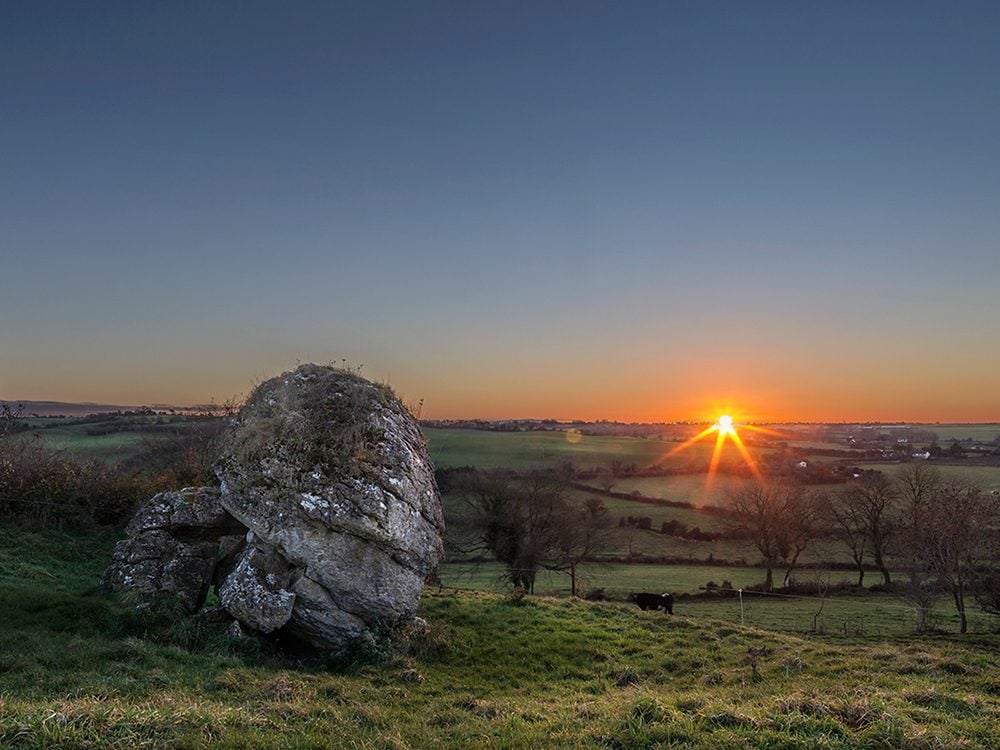
Stand in the Sacred Centre of Ireland
We have a lot to be thankful for when it comes to the lore and legends of ancient Ireland. Apart from serving as beloved bedtime stories, those superstitious beliefs ended up preserving a lot of Ireland’s early architecture.
“Even kids today are warned not to play in the ruins of a ring fort, for fear of retribution from ‘the little people,’” says Justin Moffatt, senior guide at the Hill of Uisneach in Ireland’s County Westmeath.
Here at Uisneach, an ancient site regarded as the “Sacred Centre of Ireland,” those folk tales somehow seem less far-fetched. At its heart is the Catstone—an enormous boulder dumped rather unceremoniously by a retreating glacier 12,000 years ago. Sitting incongruously on the rolling scrubland, the Catstone marks the crossroads of the ancient provinces of Ireland, hence its moniker, “The Stone of the Division.” This deeply spiritual place served as an inauguration site where ancient kings and queens would take their vows, and exudes a curious majesty that makes it a truly rewarding experience for visitors exploring Ireland off the beaten path.
Travel tip: It’s worth trekking to the very top of the Hill of Uisneach. From this spectacular vantage point 600 feet above sea level, you can see as many as 20 surrounding counties.
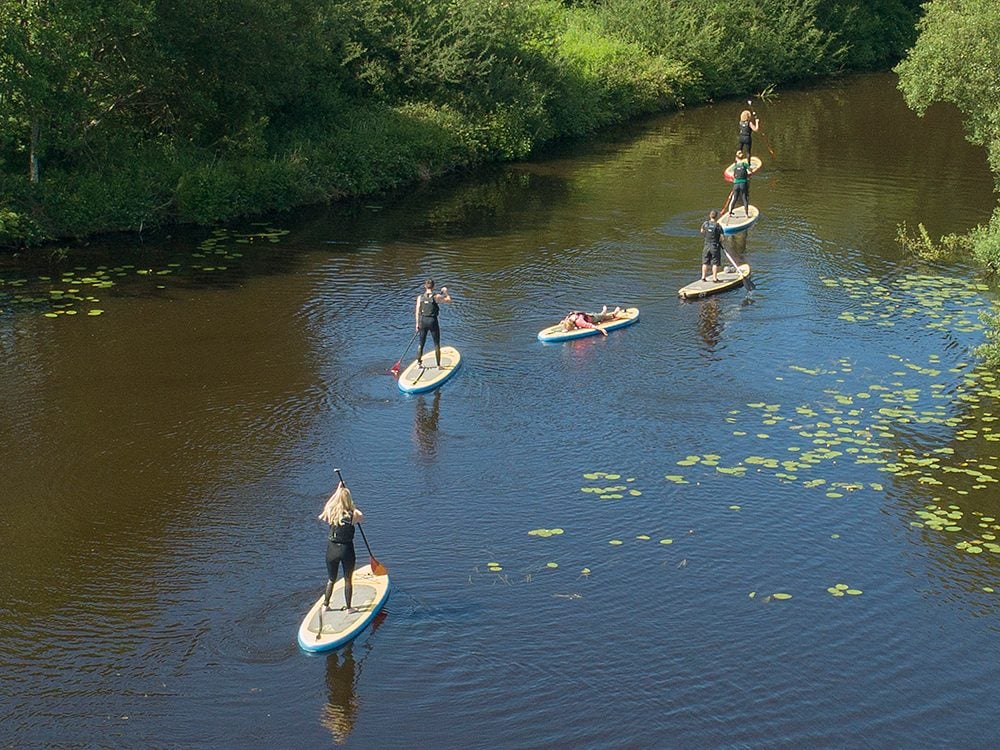
Paddleboard Down an Ancient Canal
The sleepy, land-locked town of Drumshanbo probably isn’t the first place that springs to mind for paddleboarding, but it actually has several advantages over its coastal competition. Not only do the millpond-like waters of the River Shannon provide the perfect setting for novices eager to try their hand at the sport, but they also serve as one of the most scenic routes in County Leitrim.
On a guided tour with the Leitrim Surf Company, you’ll launch your paddleboard from Acre Lake and cruise down Drumshanbo’s ancient canal into an exotic realm where the Shannon has been dubbed “the Shamazon.” Enveloped in a dense canopy of centuries-old trees that arch overhead like a cavern, it’s an incredibly tranquil experience—and a welcome core workout that will help offset all of those pints of Guinness.
Travel tip: No previous paddleboarding experience under your belt? No problem! The guides with Leitrim Surf Company provide full instruction for beginners—and the all-important wetsuit—before you set out on your tour.
Find out why Dublin is considered one of the world’s top destinations for foodies.
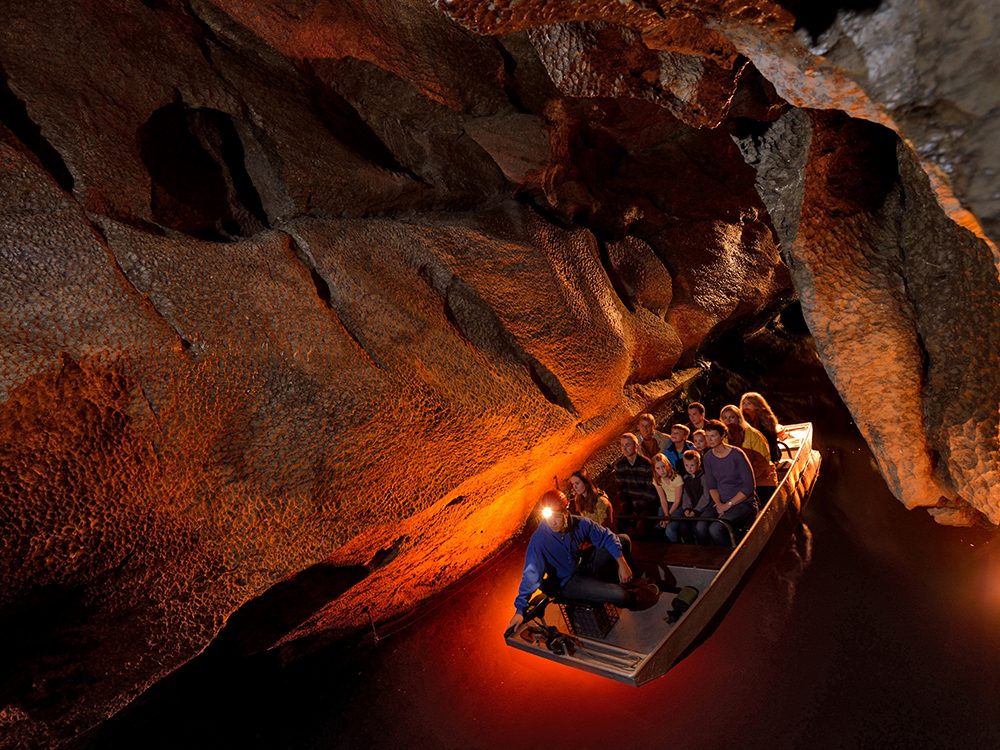
Go Boating—Underground
Although you might find yourself winded walking the Cuilcagh Mountain trail, what’s truly breathtaking is the eerie underworld that lies below.
Completely undisturbed until 1895 when two intrepid explorers first penetrated its inky depths, the Marble Arch Caves are among the most impressive cave formations in Europe. Carved into the soft Carboniferous limestone by the action of no fewer than three underground streams, the spectacularly-lit subterranean chambers serve up everything the amateur spelunker could wish for—namely stalagmites, stalactites and glittering cave curtains. Throw in a boat ride—required to cross one of the underground rivers on the 1.5-kilometre guided tour—and you’ve got an utterly unforgettable taste of Ireland off the beaten path.
Travel tip: Encountering heavy rain on your trip? High water levels can put the kibosh on the cave tour, so it’s a good idea to call in advance of your visit to confirm availability.
Prepare for your adventure by exploring these remarkable caves in Canada.
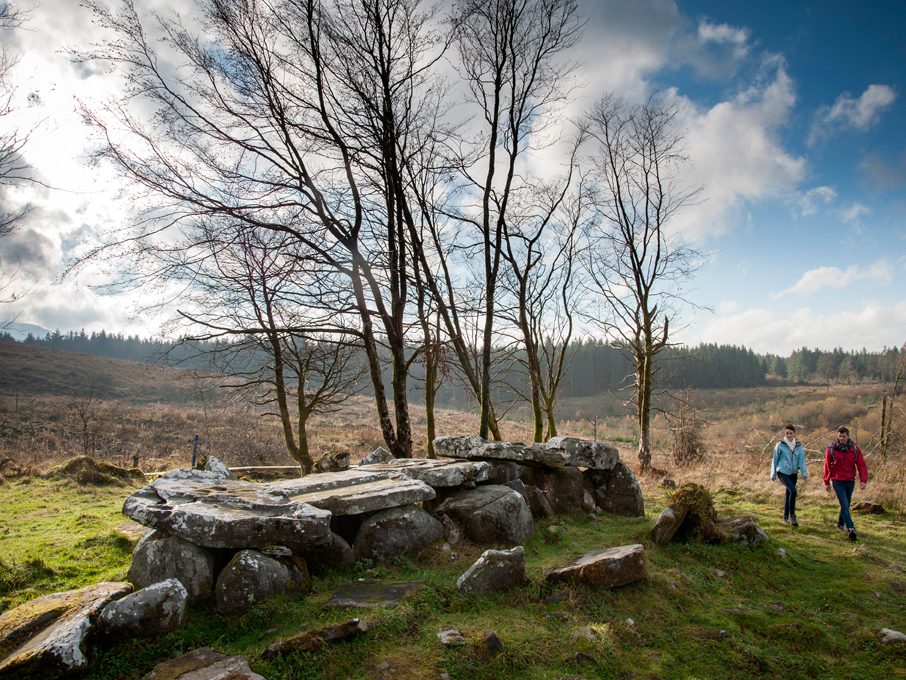
Marvel at a Megalithic Tomb
Feeling a tad claustrophobic after your underground adventure? The perfect tonic to the close atmosphere of the Marble Arch Caves can be found a mere 20-minute drive west in the wide-open spaces of Cavan Burren Park.
Part of the same Geopark as the caves themselves, Cavan Burren boasts four walking trails that wind through some of the finest prehistoric features in Ireland. Even the easiest of these routes—the 1.3-kilometre multi-access Calf House Dolmen Trail—delivers an incredible return on investment. The first stop on the route, the Tullygobban beauty spot, affords a spectacular 360-degree view of the surrounding countryside: rolling scrubland dotted with bogs and enormous ice age boulders known as glacial erratics. Further along, the wonders shift from the geological to the archaeological, leading to the Tullygobban Tomb—a megalithic monument in which semi-cremated prehistoric human remains were found. Those haunting echoes of Ireland’s first settlers resound throughout the park, accompanied only by the titter of birds and baying of sheep.
Travel tip: If you’re feeling particularly ambitious (and remembered to pack comfy footwear), consider tackling the Cavan Way trail. The rewarding 26-kilometre route connects the villages of Dowra and Blacklion, and links many of the major sites within the Marble Arch Caves Geopark.
Discover more ancient architecture that boggles the mind.

Sample Something Other Than Irish Whiskey
The Irish are rightly renowned for their whiskeys, but that’s not the only spirit making a splash on the Emerald Isle—and beyond. The country’s natural abundance of juniper has proved a boon for gin production, and new gin distilleries are springing up faster than you can say, “Slainte!”
One of the most exciting of these upstarts is the Shed Distillery, nestled deep in the rural wilds of Drumshanbo, County Leitrim. Voted Ireland’s best gin in 2016, the distillery’s signature Drumshanbo Gunpowder Irish Gin has a fresh citrus taste with spicy notes of oriental botanicals, including—you guessed it—gunpowder tea. A tour of the facility shines a light on the fascinating production process, from slow-distilling in medieval copper pots to hand-filling and sealing in souvenir-worthy blue bottles. Just consider yourself warned—you’ll be a gin snob forever after.
Check out 10 great destinations for the solo traveller.
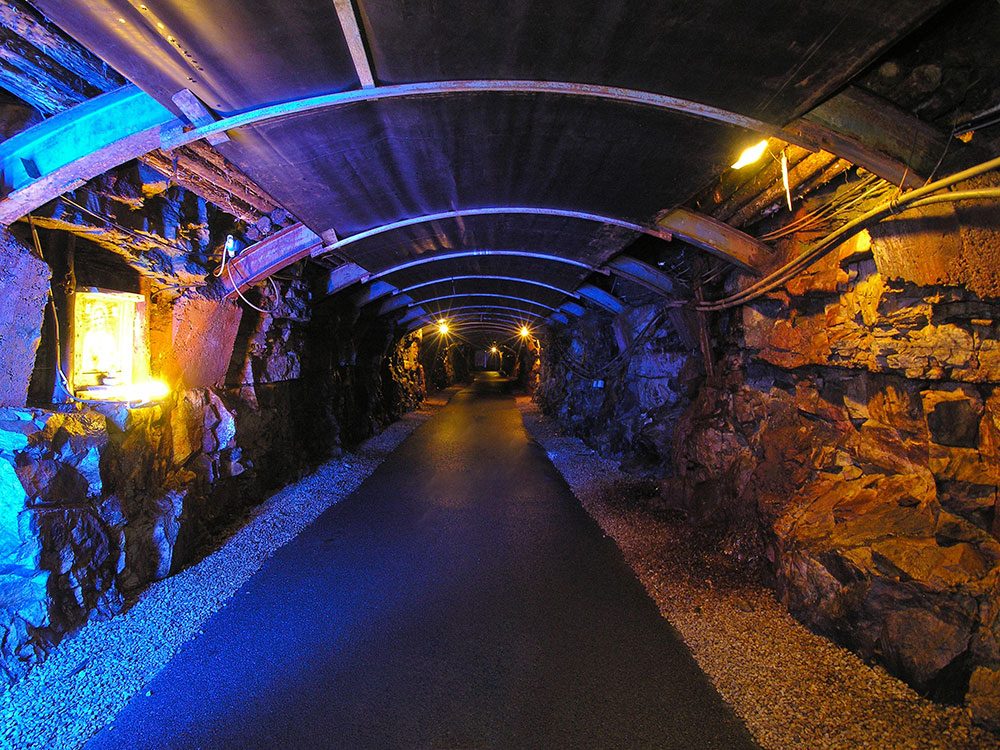
Become a Coal Miner For a Day
Between the cold, claustrophobic conditions and constant threat of cave-ins, it’s hard to imagine just how difficult life would’ve been for an Irish coal miner. It’s harder still to imagine that that life existed as recently as 1990, when the last working coal mine in Arigna finally shut down operation.
Although its coal-producing days are past, the pit remains open—as a tourist attraction, at least—as part of the Arigna Mining Experience in County Roscommon. From the impressive visitor centre designed to evoke a mine’s slag heap, you’ll be taken on a journey back through time—and into the mine itself—by retired miners who now serve as guides. Ultimately, it’s their personal anecdotes and insights into this lost lifestyle that will remain with you long after the thrill of descending into the pit fades. It’s a fascinating slice of Ireland off the beaten path—and an unflinching look at an industry that kept an entire community afloat for nearly 400 years.
Travel tip: Want to make a full day of it? Pair the Arigna Mining Experience with a tour of the Shed Distillery—the two sites are separated by a mere 15-minute drive.
Explore the world’s greatest museums.
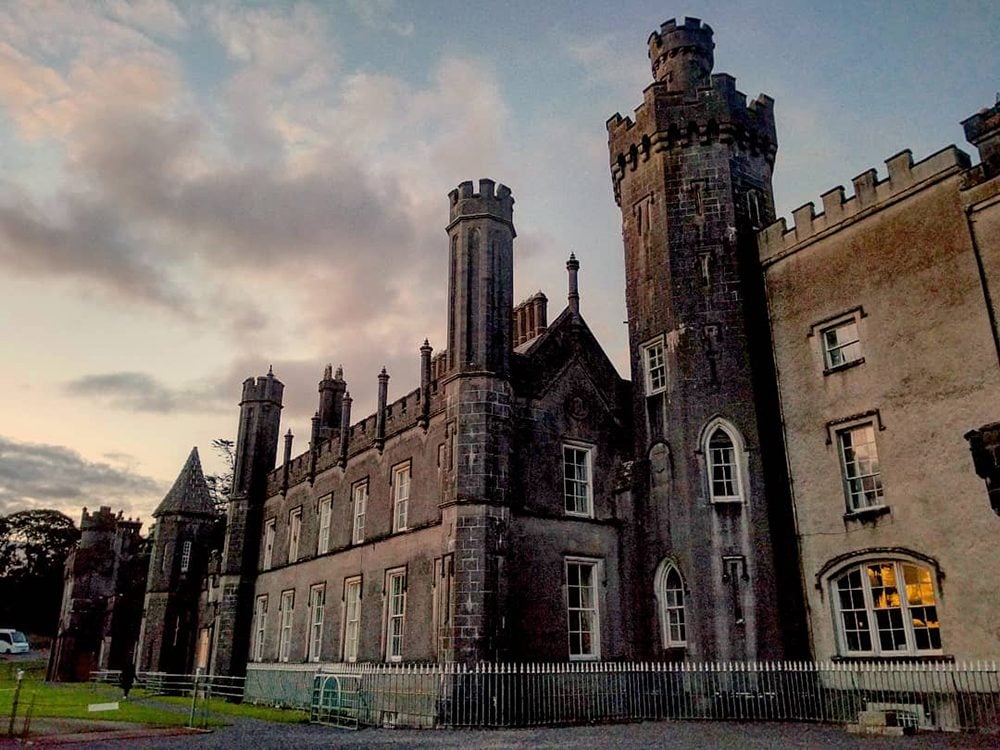
Hunt for Ghosts in a Haunted Castle
For more than 350 years, Tullynally Castle has been home to the Pakenham family. With the current Earl of Longford, Thomas Pakenham, still in residence, it’s what’s referred to as a “living” castle—despite the fact that several other inhabitants don’t quite fit the bill. Local guide Bartle D’Arcy tells of a malevolent presence in the castle’s Octagonal Tower bedroom that’s haunted the family for generations. Pakenham’s own daughter, Eliza, claims to have been visited by the ghost of a dead butler one New Year’s Eve, and on another occasion, witnessed the apparition of a disembodied head. Walking the historic halls of this great estate—one of the largest houses in Ireland to remain in private hands—it’s easy to imagine something sinister lurking in the shadows. Is this video (below) captured on a recent tour of Tullynally proof of its paranormal activity? You decide!
Travel tip: The main attraction at Tullynally from May to September is the glorious Castle Gardens. Restored to their 18th century roots, the 12 acres of lush landscaping are a testament to the green thumbs—and grand vision—of Thomas Pakenham and his late wife, Valerie.
Check out 10 famous castles with fascinating histories.
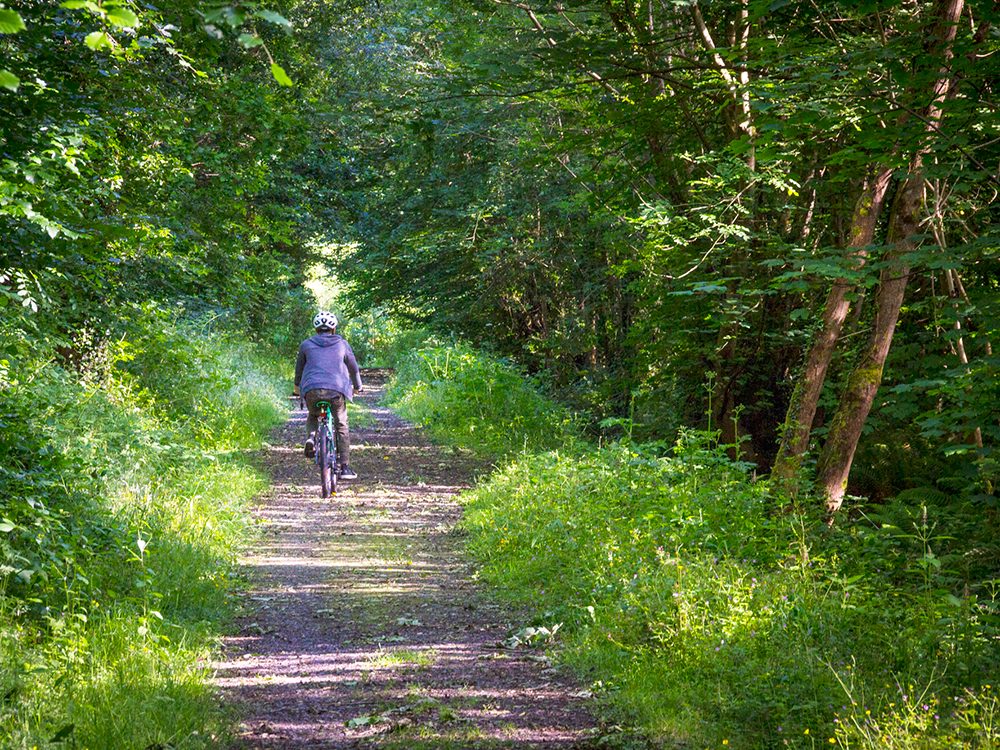
Mountain Bike Through an Enchanted Forest
If C.S. Lewis’s Narnia were to exist on Earth, it would surely be Killykeen Forest Park in County Cavan. Here, dappled by the sunlight that streams through the dense canopy of old-growth spruce, oak and ash, you’ll find a network of impeccably-groomed bike trails, with some more challenging off-path options for the well-seasoned cyclist. Regardless of your skill level, the best way to explore this enchanted forest is with an experienced guide from the Cavan Adventure Centre. Available for half- or full-day hire, your guide will handle the logistics of getting you and your rental mountain bike to Killykeen and back, and lead you through the winding woodland trails at whatever pace you please. It’s the perfect way to lose yourself in the heart of Ireland’s stunning lakelands—without actually getting lost.
Travel tip: Before hitting the bike trails, stop for a moment to appreciate the beauty of Lough Oughter, which runs through Killykeen Forest Park. A popular fishing destination, the pristine lake is also home to huge populations of herons, whooping swans and other waterfowl.
Find out the best bike trails across Canada.
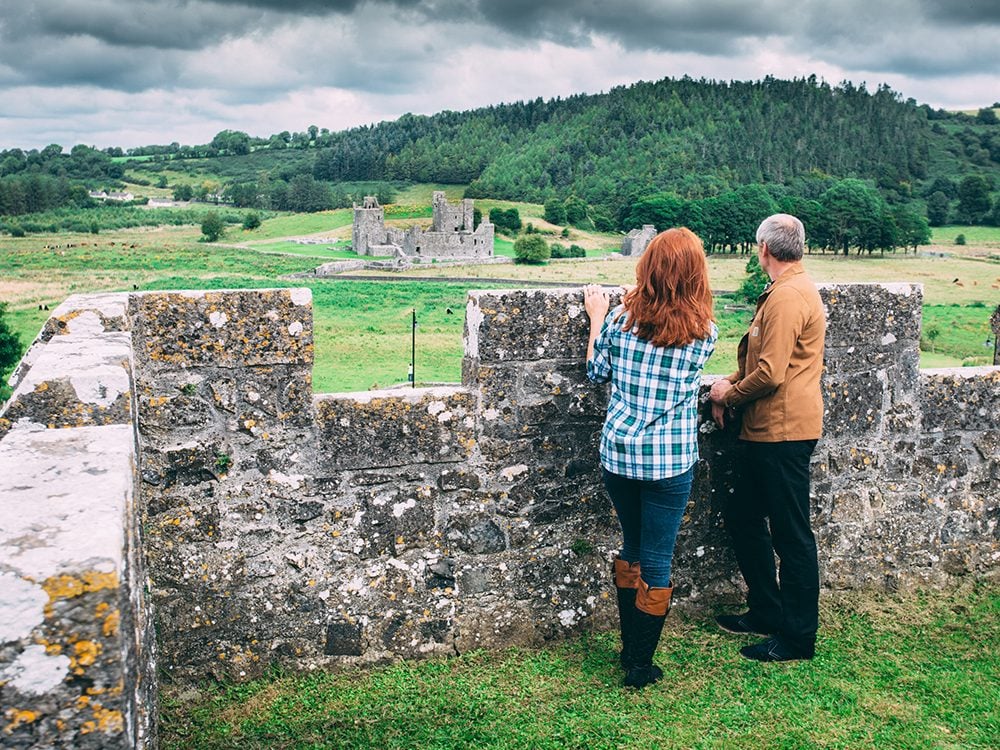
See Seven Wonders in a Single Valley
On a tight schedule? You can hardly make better use of your time than a visit to Fore Abbey, which packs seven tourist attractions into one lush green valley. Known as the Seven Wonders of Fore, this off-the-beaten-path site has sparked folk tales wild enough to fire the imagination of even the staunchest cynic. There’s a decidedly creepy-looking “Tree That Won’t Burn,” sat next to a well filled with “Water That Doesn’t Boil.” The monastery itself apparently defies nature, having been built upon a bog, yet stubbornly refusing to sink. Oh, and that enormous lintel stone in the ruins of St Feichin’s church? It was raised by the power of prayer. Regardless of whether or not you buy into the legends, there’s a tangible sense of mystery here that’s irresistible to the open-minded traveller.
Travel tip: The charming town of Castlepollard is the perfect jumping-off point for exploring the Seven Wonders of Fore. If you time your visit right, sit in on a match of the town’s major sport, a field hockey-type activity known as “hurling.”
Discover more of the world’s strangest landmarks.
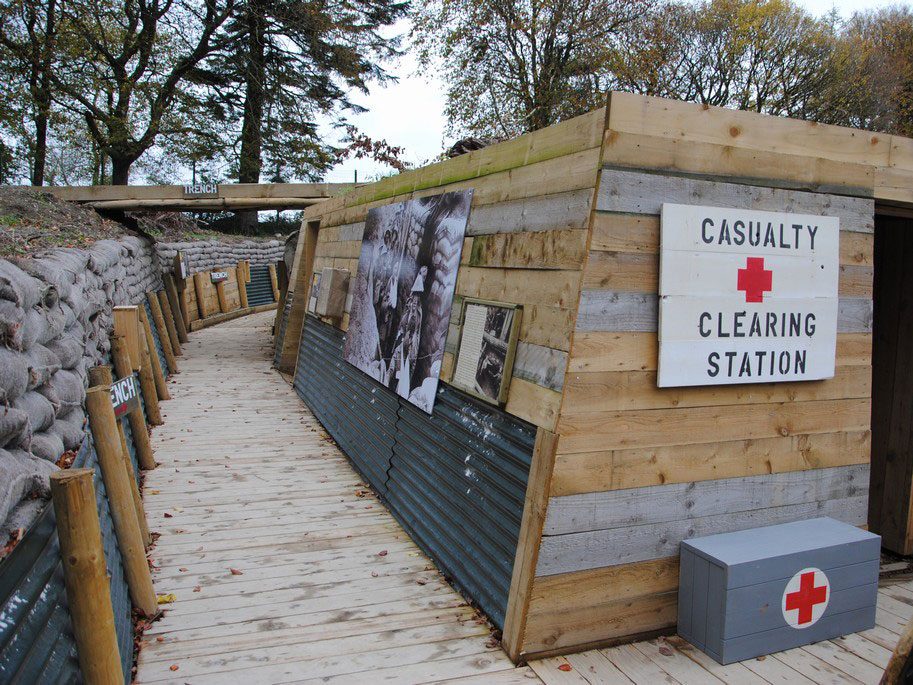
Experience Life in a First World War Trench
It’s estimated that 35,000 Irish lost their lives in the First World War, with a single skirmish—1916’s savage Battle of the Somme—accounting for nearly 10 per cent of those casualties. To commemorate that horrific event, the Cavan County Museum recreated—to spec—the very trenches used by those heroic Royal Irish Fusiliers. The WWI Trench Experience is now the largest outdoor replica trench open to the public in Ireland and the UK, giving visitors a sobering sample of what life would have been like at the front line. Between the sandbags and sound effects, walking the 350-metre trench is an intense experience that will leave you profoundly moved—and grateful for the noble sacrifice of so many brave soldiers.
Travel tip: Among the gems on display in the Cavan County Museum is the Corleck Head, an Early Iron Age stone idol that could date back as far back as the 1st century AD. What makes this stone head particularly intriguing is the fact that it has not one, but three faces carved around its circumference; a unique feature displayed to great effect on a rotating plinth.
Now that you know the best of Ireland off the beaten path, check out 50 London attractions worth adding to your bucket list.